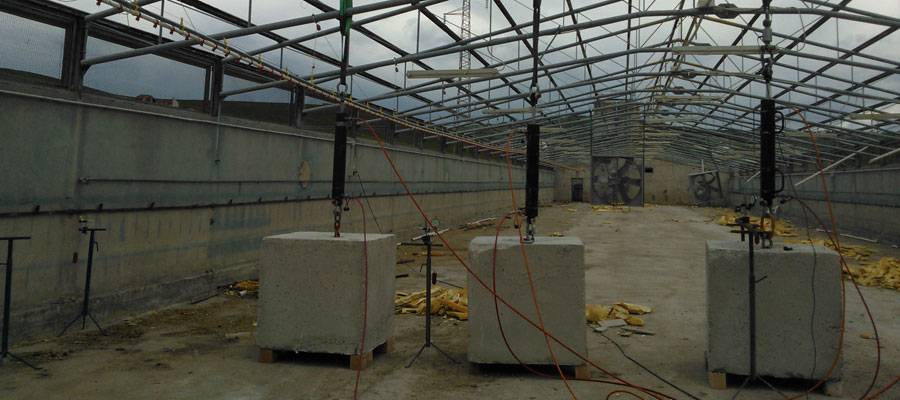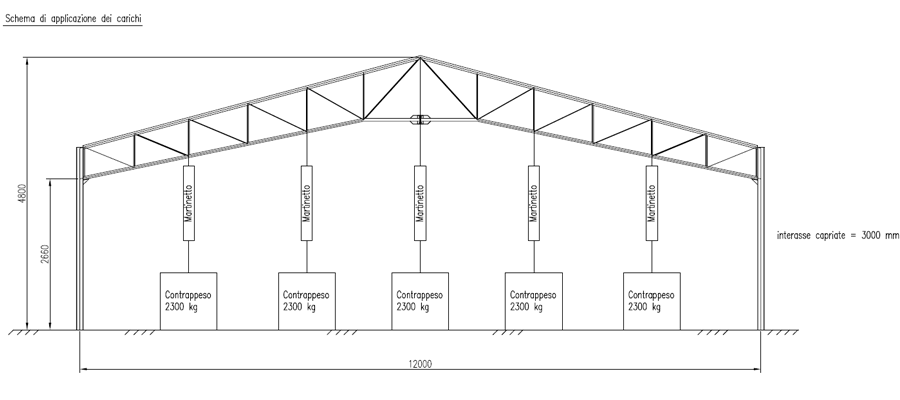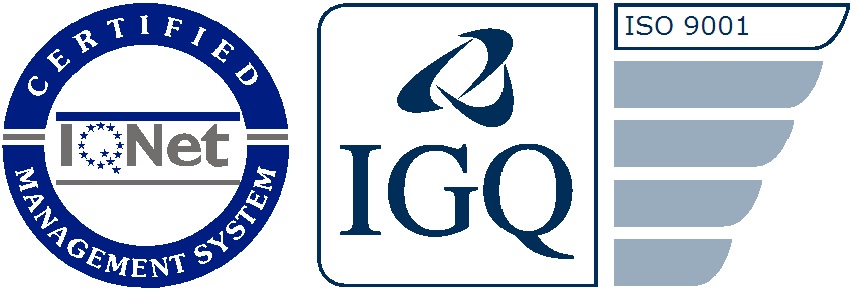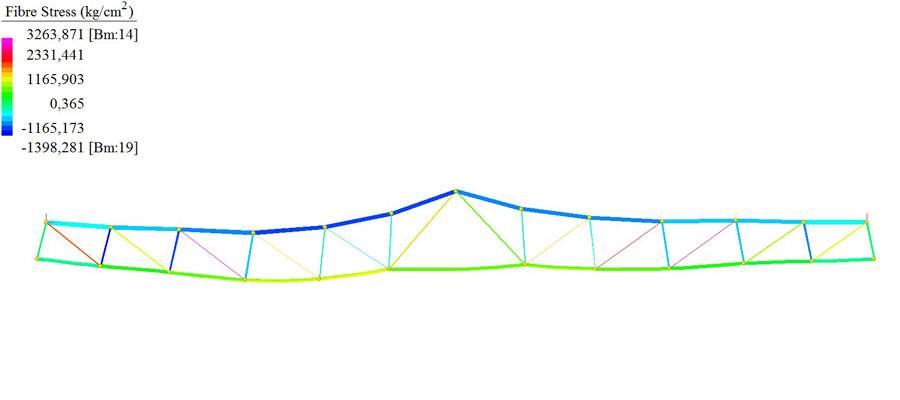Static load test on steel trusses

The load test purpose is to verify the elastic behaviour of metal elements enduring even weighter loads in order to obtain the maximum strain as expected in the project.
The structural elements to verify, the determination and arrangement of loads as well as the survey modality and measurent points are selected in advance.
The truss under test, has a span which is 12 meters long and has a reticular steel structure.
The test was carried out on two trusses of the building in order to have a double confirmation. Each truss was loaded in five different points dividing the span into six identical parts.

The load has two phases: The first up to 700 kg per point and the second up to 1000 kg. Choosing the load to put on each node, we took into account the weight of the sandwich and photovoltaic panel as well as the snow and plants load. Further steps followed each phase:
Phase 1 0 kN – 2,5 kN – 5 kN - 7 kN e 0 kN
Phase 2 0 kN – 2,5 kN – 5 kN - 7 kN - 10 kN – 4 kN – 0 kN
In each phase we measured the vertical movements at three points. The load was fixed through five hydraulic jacks. They were tied through cables to the anchor point on the upper part and to 2300 kg of concrete ballast at the bottom. Mechanical deflectometers with a sensitivity of 1/100 mm measured deformations. (fig.3).

The test was performed using a specific instrumentation which revealed the pressure and movement values relating to two loading and unloading cycles. These values were essential to define the load-movements graph of each measurement point and to verify the existence of plastic deformations.
These data permited immediate evaluation of the elasticity of the structure (proportionality between load and deformation) and enable the engineer to compare them to the theoretical values of the project.
The outcomes of the tests performed at 100% of theoretical load were in agreement with the hypothesis of deformation made with Straus7 structural calculation program. They showed the elastic behaviour of the steel structure.
It follows that the structure was approved.




